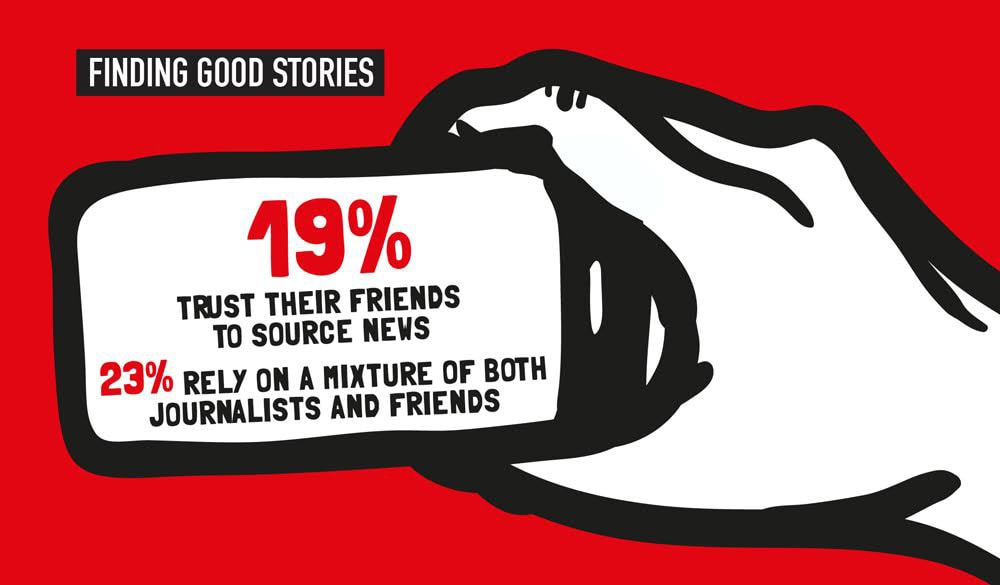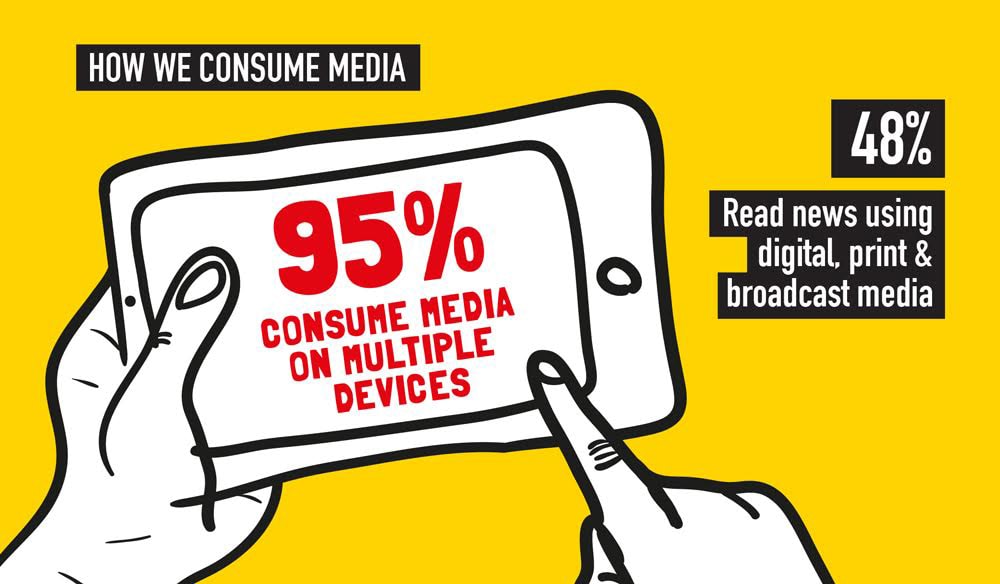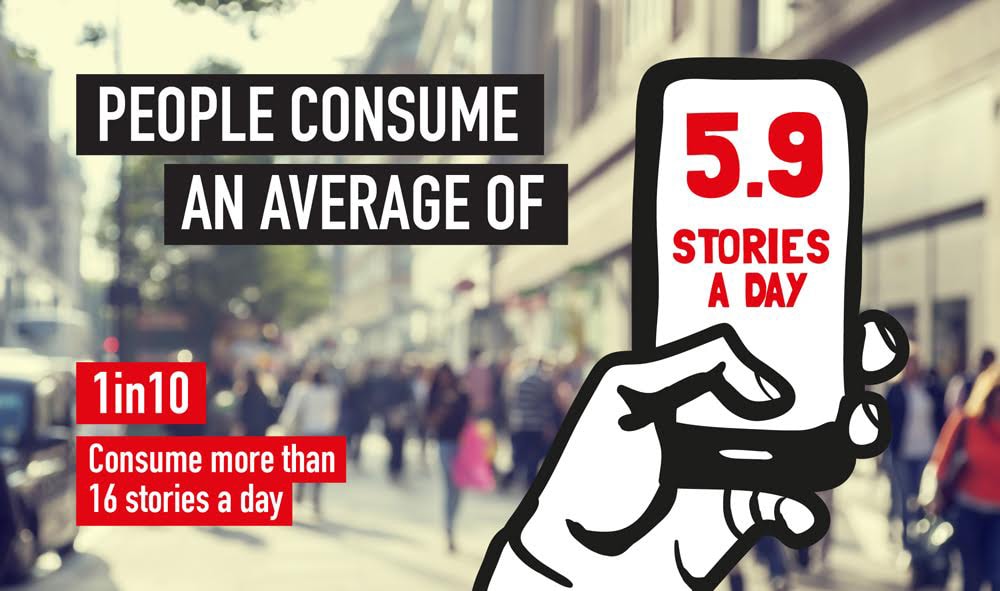Social media and mobile technology have brought media consumers closer to the news than ever. But rather than creating a deluge of media, new research has found they have allowed people to develop editorial controls to filter out the content that appeals to them.
According to the study by PR agency 72Point, based on the response of 7,500 media consumers, more than a third (36 per cent) of people say they feel more in control of the news they receive since owning a smartphone or tablet compared to only 11 per cent who say they feel less in control. Seven in ten believe social media has made it easier to access news, with more than four in five 18-24 year-olds and three-quarters of female respondents saying they feel social media has brought them closer to the media.

Rather than being overrun by content, people have adapted to the 24/, immersive media environment by developing editorial controls and filters. Some 56 per cent of people say they don’t feel bombarded by media because they have become agents in the media cycle, choosing who to follow based on the content they’re most keen on receiving and becoming more powerful as a result. Similarly, when our interests change or we’re disappointed by our supplier, we reshape who we follow to minimise the amount of superfluous content heading our way.
Almost a quarter of people say they have friends or follow people who they regard as authorities for news and one in five say they trust their friends to source news. Eighteen per cent say they only give a news source a week before unfollowing or unfriending if they find it not to be useful, with more than one in ten (11 per cent) saying they would only last a day. The average time we wait before unfollowing or unfriending a news source we no longer find useful is 22.3 days.

Jack Peat, Head of Digital at 72Point, says: “The perception that consumers can’t cope with a wealth of content needs to be challenged - this research suggests we have adapted to cope with it. Citizen editorship is the term we use to describe the funnel used by consumers to filter out content that is irrelevant to them.”

The research found that people consume an average of 5.9 media stories a day, with almost one in ten consuming more than 16 stories a day. A massive 95 per cent of respondents said they consume media on multiple devices and almost half (48 per cent) take a multi-channel approach to media, merging digital, print and broadcast channels into their own preferred mix.

Peat adds: “For media and PR professionals, infiltrating these editorial controls means delivering flexible, relevant content that transcends channels and platforms. With social media an increasingly important part of the media mix, it is essential that a variety of media is delivered in order to reach intended audiences. We foresee video and multimedia to be an increasingly important part of that mix, but we don’t expect that to be at the expense of other media types, namely because people have become better skilled at filtering out the content that appeals to them.”
Methodology:
This survey was completed online by 7,500 members of One Poll’s extensive participant database. All surveys commissioned for One Poll comply with the MRS Code of Conduct.
If you enjoyed this article, sign up for free to our twice weekly editorial alert.
We have six email alerts in total - covering ESG, internal comms, PR jobs and events. Enter your email address below to find out more:






